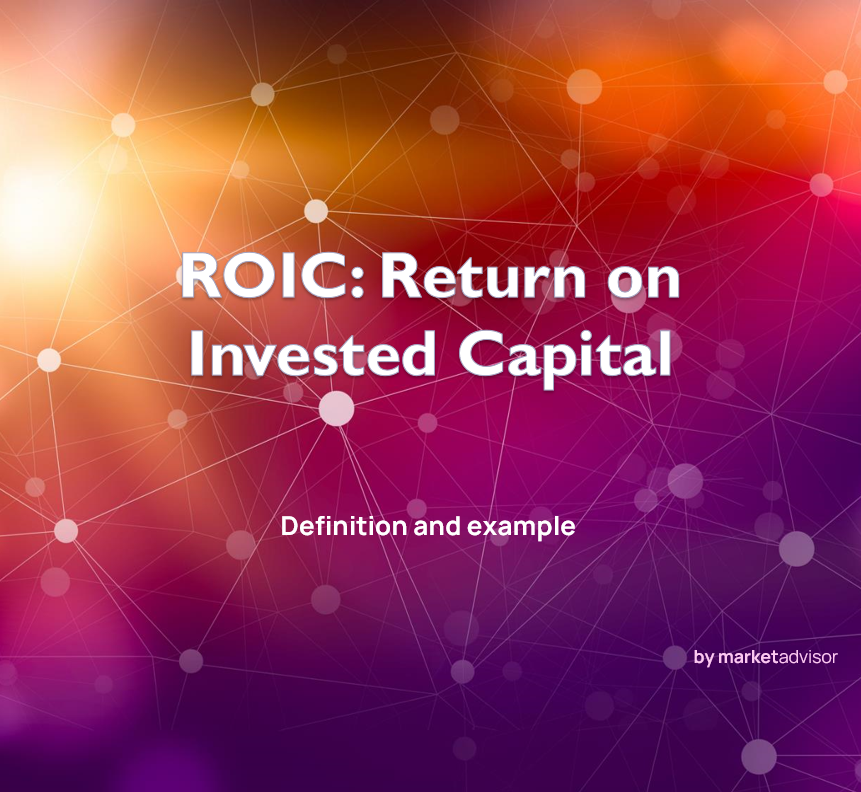What Is ROIC (Return on Invested Capital)?
The return on invested capital (ROIC) calculation is used to evaluate a company’s efficiency in allocating capital to profitable investments. Divide net operating profit after tax (NOPAT) by invested capital to get the ROIC formula.
ROIC measures how effectively a company uses its capital to generate profits. When a company’s ROIC is compared to its weighted average cost of capital (WAAC), it becomes clear whether invested capital is being used effectively.
ROIC is defined as:
ROIC= (net income - dividends)/ (debt + equity)
The ROIC formula computes the value in the denominator, total capital, which is the sum of a company’s debt and equity.
An ROIC greater than the cost of capital indicates that the company is healthy and growing, whereas a ROIC less than the cost of capital indicates that the business model is unsustainable.
There are several methods for calculating this value. One method is to deduct cash and non-interest-bearing current liabilities (NIBCL) from total assets, including tax liabilities and accounts payable that are not subject to interest or fees.
A third method of calculating invested capital is to add a company’s equity to its debt and then subtract non-operating assets such as cash and cash equivalents, marketable securities, and assets of discontinued operations.
A final method for calculating invested capital is to subtract current liabilities from current assets to obtain the working capital figure. Then, subtract cash from the working capital value you just calculated to get non-cash working capital. Finally, non-cash working capital is added to the fixed assets of a business.
There are several ways to calculate the value in the numerator. The simplest method is to deduct dividends from a company’s net income.
However, because a company may have benefited from a one-time source of income unrelated to its core business—for example, a windfall from foreign exchange rate fluctuations—it is often preferable to look at net operating profit after taxes (NOPAT). NOPAT is calculated by deducting taxes from operating profit:
NOPAT= (operating profit)x(1 - effective tax rate)
How ROIC Can Inform You ?
Always expressed as a percentage, ROIC is typically expressed as a value that has been annualized or deflated over the previous 12 months. To ascertain whether a company is producing value, it should be contrasted with its cost of capital.
Value is being created and these companies will trade at a premium if ROIC exceeds a firm’s weighted average cost of capital (WACC), the most popular cost of capital metric. A return of two percentage points above the firm’s cost of capital is a common standard for demonstrating value creation.
Some businesses operate at a zero-return level, which may not be destroying value but leaves them with no extra cash to invest in future expansion.
One of the most significant and insightful valuation metrics to compute is ROIC. However, it matters more for some industries than others because businesses that run oil rigs or make microprocessors invest capital much more heavily than those that operate with less sophisticated machinery.
ROIC’s Limitations
This metric’s main drawback is that it provides no information about the area of the business that is producing value. The outcome can be even more ambiguous if you base your calculation on net income (less dividends) rather than NOPAT because the return might be the result of a single, one-time event.
For other metrics like the price-to-earnings (P/E) ratio, ROIC offers the required context. When viewed alone, the P/E ratio may indicate that a firm is oversold, but the reduction may really be due to a decrease in the rate at which the company is creating value for its owners (or at all). However, even if their P/E ratios appear excessively high, businesses that continuously provide high rates of return on capital invested surely deserve to trade at a premium relative to other equities.
